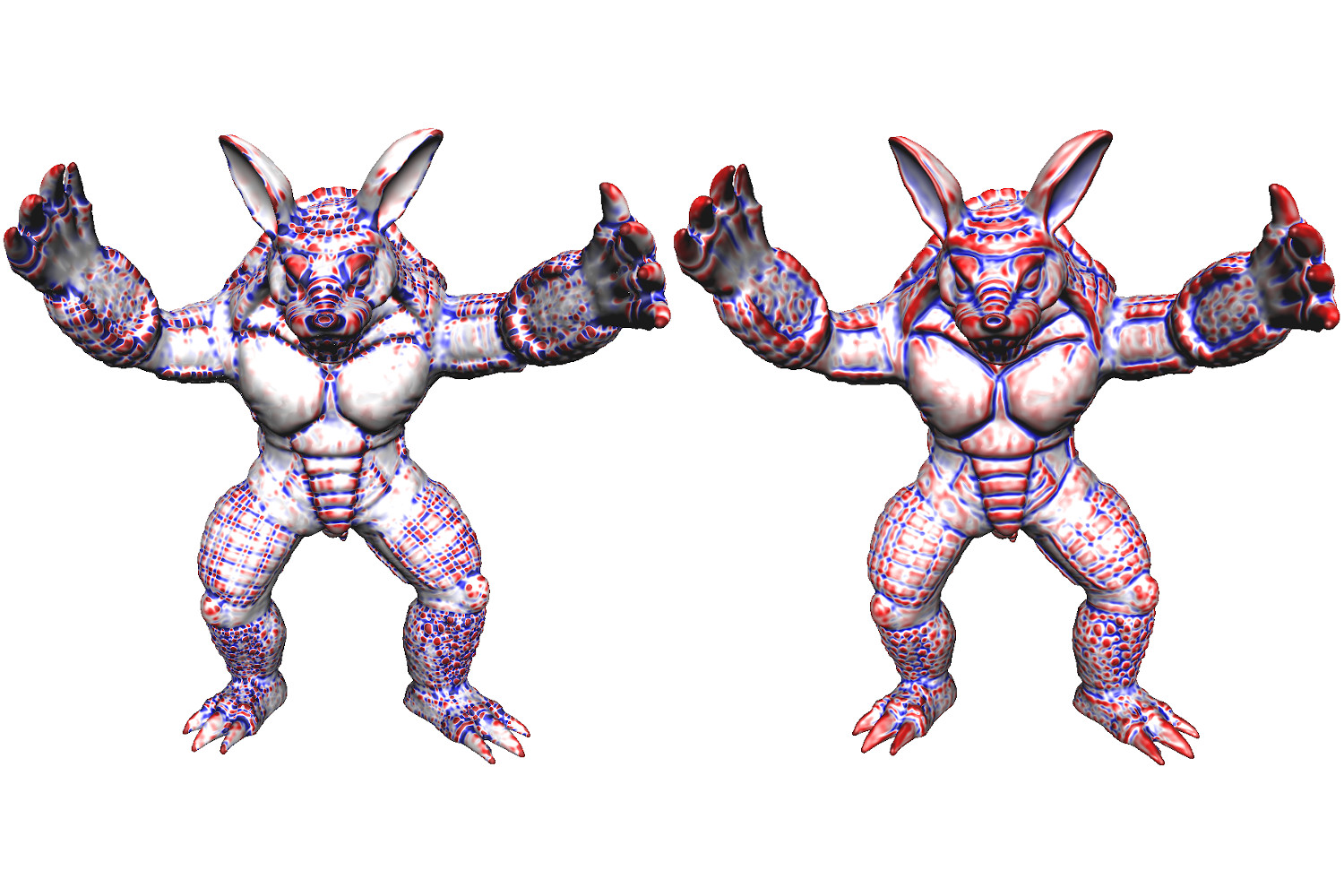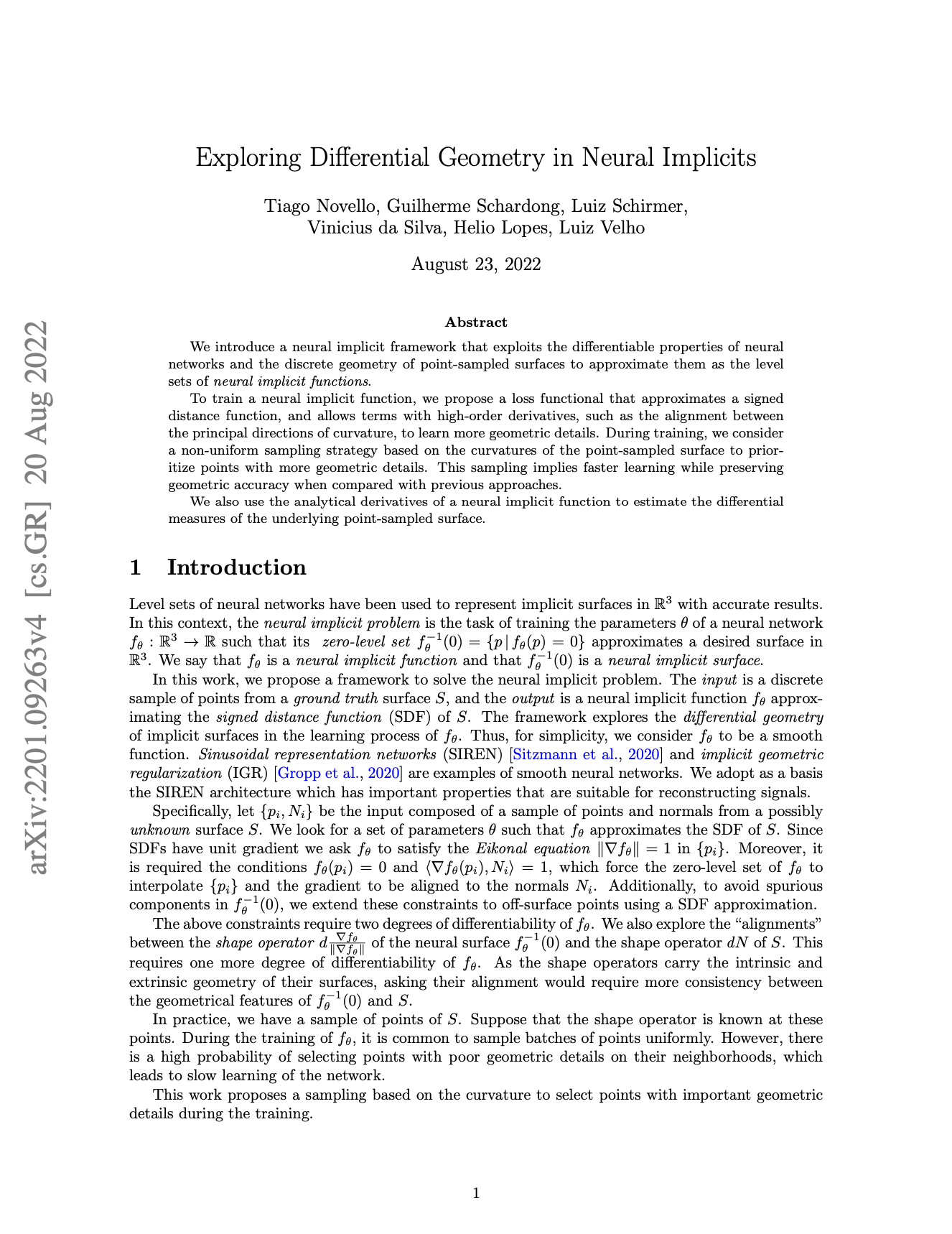Exploring Differential Geometry in Neural Implicits
News
Abstract
We introduce a neural implicit framework that exploits the differentiable properties of neural networks and the discrete geometry of point-sampled surfaces to approximate them as the level sets of neural implicit functions.
To train a neural implicit function, we propose a loss functional that approximates a signed distance function, and allows terms with high-order derivatives, such as the alignment between the principal directions of curvature, to learn more geometric details.
During training, we consider a non-uniform sampling strategy based on the curvatures of the point-sampled surface to prioritize points with more geometric details. This sampling implies faster learning while preserving geometric~accuracy when compared with previous approaches.
We also use the analytical derivatives of a neural implicit function to estimate the differential measures of the underlying point-sampled surface.
Overview
The main contribution of our work is a global geometric representation in the continuous setting using neural networks as implicit functions. Besides capturing geometric detail, this model is robust for shape analysis and it is efficient since we have its derivatives in closed form.
Specifically, we propose a loss function that allows the exploration of tools from continuous differential geometry during the training of the neural implicit function. This results in high fidelity when reconstructing geometric features of the surface.
During the training of the neural implicit function, we use the discrete differential geometry of the dataset (triangle mesh) to sample important regions. This results in robust and fast training, without losing geometric details.
Results
Bunny
Dragon
Armadillo
Buddha
Paper
Exploring Differential Geometry in Neural Implicits
Tiago Novello, Guilherme Schardong, Luiz Schirmer, Vinícius da Silva, Hélio Lopes and Luiz Velho
Please send feedback and questions to Tiago Novello.
Citation
@article{novello:i3d:2022,
title = {Exploring differential geometry in neural implicits},
journal = {Computers & Graphics},
volume = {108},
pages = {49-60},
year = {2022},
issn = {0097-8493},
doi = {https://doi.org/10.1016/j.cag.2022.09.003},
url = {https://www.sciencedirect.com/science/article/pii/S0097849322001649},
author = {Tiago Novello and Guilherme Schardong and Luiz Schirmer and Vinícius {da Silva} and Hélio Lopes
and Luiz Velho},
keywords = {Implicit surfaces, Neural Implicits, Neural Networks, Curvatures},
}Acknowledgements
We would like to thank
Towaki Takikawa,
Joey Litalien,
Kangxue Yin,
Karsten Kreis,
Charles Loop,
Derek Nowrouzezahrai,
Alec Jacobson,
Morgan McGuire and
Sanja Fidler
for licensing the code of the paper Neural Geometric Level of Detail:
Real-time Rendering with Implicit 3D Surfaces and project page under the MIT License. This website is based on that page.
We also thank the Stanford Computer Graphics Laboratory for the Bunny, Dragon, Armadillo, and Happy Buddha, acquired through the Stanford 3D scan repository.

